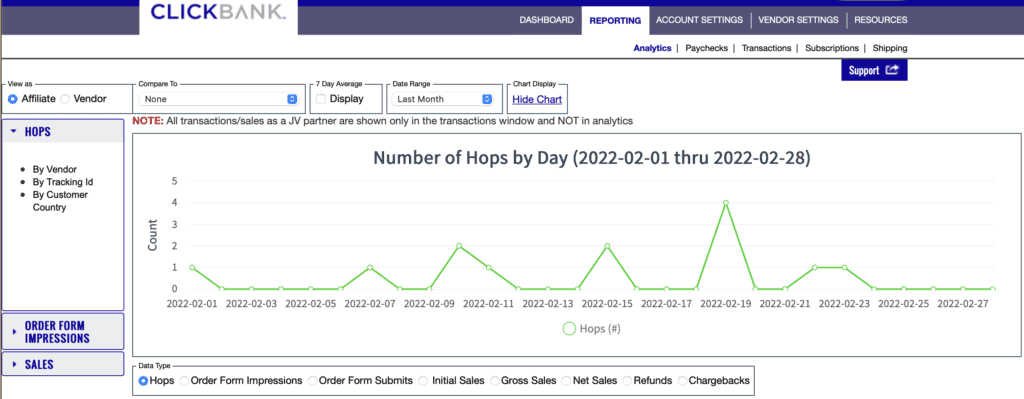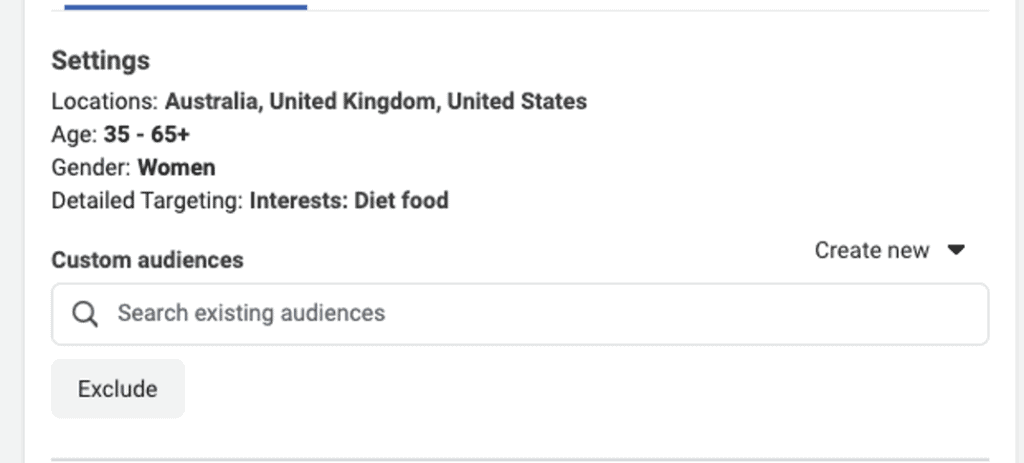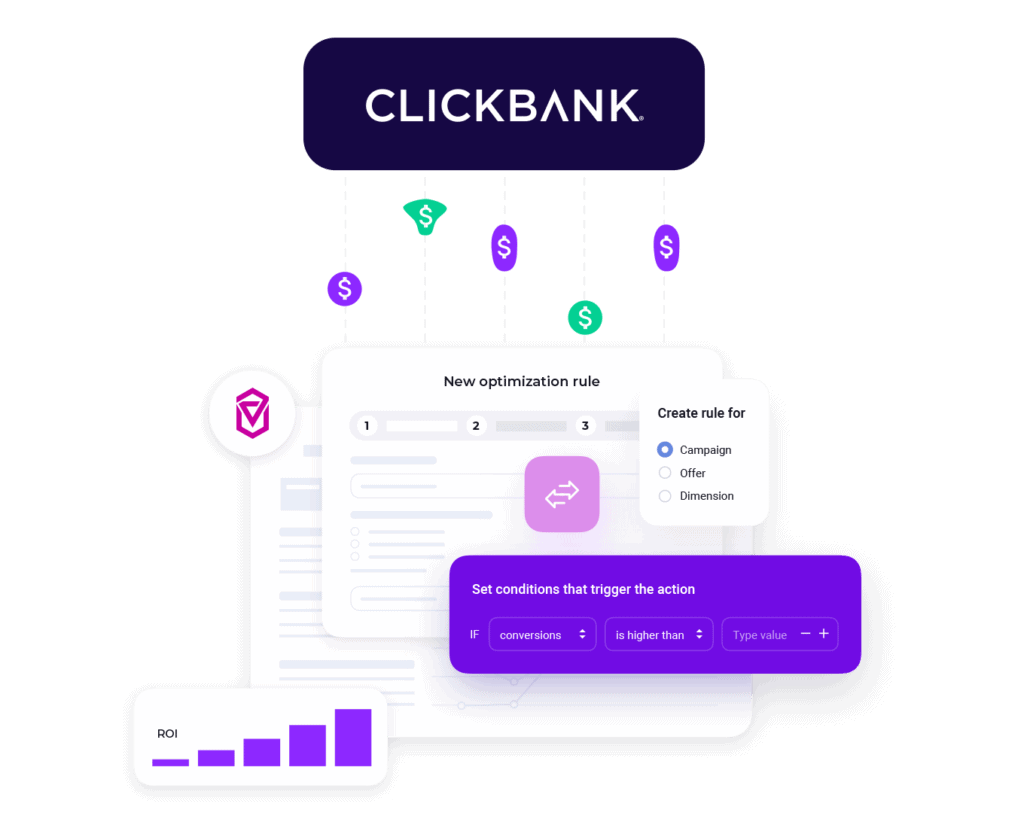Contributed by Voluum
Ten years ago, people were having heated arguments about ad trackers!
Some argued that ad trackers were overkill for solo advertisers, while others pointed out that trackers functioned a bit like nuclear weapons: if any person got one, then everyone else had to get one to keep the odds balanced!
Today, in 2022, ad trackers are so widely used that there is no going back.
But is tracking just a trend or an actual necessity? Does everyone need to track? And is the next wave of tracking – cookieless tracking – just a fancy buzzword that doesn’t mean much, or is it an essential feature for a future-oriented marketer?
In this guide on cookieless tracking from the experts at Voluum, we answer all your questions so you can make up your own mind!
Why Use a Tracker At All?
First of all, there’s the most basic question: do you even need an ad tracker?
After all, you can learn how much you have earned from inside ClickBank’s dashboard. Usually, a traffic source and affiliate network will both provide some stats to let you know if you are profitable.
This data is free and requires no additional setup.

And to be honest, if you are running one campaign with a single ad variation, landing page, and offer to a small and well-defined audience, you really don’t need much more!
So, when should you bother with a tracker?
Trackers allow you to learn from and optimize more complex funnels. Don’t get swept away by claims about 40-something data points that they record for each user-generated event. No one will optimize in that much detail.
You’ll usually focus on a few metrics (CTR, CR, ROI, eCPA) and characteristics (device type, language, country). Combine that with a few ad variations that you want to A/B test, as well as a couple of landing pages and offers, and the overall picture becomes rather complex.
This is far beyond the rudimentary built-in tracking capabilities that traffic sources and affiliate networks have to offer. And we are still talking about basic tracking tech that was already in use ten years ago. Since then, trackers have been working hard to deliver additional features that usually involve some kind of optimization algorithms or automation.
This is highly useful for some business owners, depending on the business case or traffic source/affiliate network combo they have.
But even without all those fancy “automagical” optimization features, there is a solution that will help you:
- Identify profitable portions of traffic (placements with highest ROI, CTR, or other)
- Segregate your traffic to send it to the most profitable offers (for example, iPhone traffic to one offer, Android traffic to the other)
- Pick the winning ad/landing page/offer out of the selected bunch
It’s All About Profitability
Digital marketing in general is not binary. Hardly anything is! It’s not like you either are profitable or not, and that’s it.
In the event you are NOT profitable yet, you can still turn things around with a few tweaks to your traffic targeting settings. And if you ARE currently profitable, maybe you can squeeze even more money from a campaign by excluding non-profitable portions of traffic or optimizing your ads.
Don’t forget that all this abstract “traffic” consists of real people whose interest in your campaigns fluctuates, and whose motivations and emotions are complex and hard to predict.
At ClickBank, we can only tell you that you are profitable, that you earn more than you spend. Cool.
But your work doesn’t stop there. ClickBank’s job is to provide you with top affiliate offers – the rest is on you. Microsoft Excel can’t record live data and won’t fetch any visit characteristics. It won’t reroute traffic or send you an alert.
Trackers are platforms built exactly to help you with those needs!
But I advertise on Facebook and it gives me all the information I need, so what good is a tracker then?
Social platforms and search engines know a lot about your audience and they allow you to target them with unparalleled precision.
They can handle multiple ad variations. If you feed them with conversion data, they will put their state-of-the-art algorithms to work to auto-optimize your campaigns.
For free.
That is a really sweet deal!

Social platforms make an awful lot of money on advertising, so it’s obviously in their best interest to provide great tools to their advertisers.
But with their model, an advertiser is the owner of a bookstore who promotes it locally. Or an in-house marketing department of a big corporation that is trying to raise their brand’s awareness.
In short: someone who owns a product or service that they advertise.
If you advertise offers from affiliate networks, you have a problem. Affiliate networks use postback technology to send information about a conversion.
Facebook and Google have their pixel technology. This pixel (script) has to be implemented on your offer page – something that you cannot do with offers from affiliate networks.
Voluum, the industry’s well-known ad tracker, solves this by being able to send conversions back to Google or Facebook, no matter if they were recorded using postbacks or Voluum’s pixel technology.
If you are just advertising your bookstore, though, you probably don’t need Voluum (unless you advertise it across several marketing channels and want to see all the data in one place).
Okay, but cookieless tracking is a scam, right? Why would I need this?
Ad trackers use two types of technology for recording information about events in your campaigns: redirects or scripts (sometimes called ‘direct tracking’).
Each tracker has a slightly different implementation of these methods, but usually, redirects use cookies as a backup and for scripts, cookies are essential to work.
Blocking third-party cookies (those that point to a different domain than someone is currently visiting) one of the main ways to protect privacy – and a current trend after Apple’s iOS 14 update.
Some web browsers (I’m looking at you, Safari) are already doing it. Others, like Chrome (the world’s most popular web browser) are getting there.
In short, trackers need to learn how to work without third-party cookies. Otherwise, they might lose half of their customers!
“Cookieless” is a code word for tracking technologies that can work without third-party cookies. They may use first-party cookies that will not be blocked in the foreseeable future, or they may skip out on cookies altogether.
But the bottom line is, “cookieless tracking” is not just a buzzword. It’s a real response to a shift in the industry. (And yes, also a buzzword.)
So – aside from bookstore owners & advertisers with one campaign & an ad – should everyone use trackers?
You can build a house with just a hammer. But a power drill comes in very handy.
As I said before, the basic tracking tech was ready years ago – but since then, trackers have kept delivering new features that put their customers ahead of everyone else.
There are integrations with popular traffic sources and affiliate networks (for example, Voluum is integrated with Clickbank, among many other platforms), automations, machine learning algorithms, tools that support team collaboration or various anti-fraud mechanisms, to name a few features.

The main takeaway here is that ad trackers save you a lot of hassle and manual work. Instead of tediously inputting numbers into Excel, you can analyze summarized data, make quick decisions, and move on to the actions that will bring you more money.
Trackers aren’t free – the servers and people maintaining and developing the software need to be paid. But the value they provide should exceed their price multiple times!
You mentioned an integration with Clickbank?
Yes, Voluum is a close partner of Clickbank. The integration allows Clickbank to send conversion data via API, the most reliable way. No postbacks, no scripts. No cookies. Tracking diet.
Final Thoughts: Ad Trackers of the Future
The changes in the industry may force trackers to update their technologies but certainly won’t make them obsolete. If anything, they will be even more necessary, since margins are getting lower and the only way forward is scaling up!
Ten years ago, you could do without a tracker. Today, everything is performance marketing. Every marketing campaign is analyzed and optimized. All marketers are focused on results. It’s a rat race, if rats could crunch visit numbers.
Ad trackers and ClickBank are a match made in heaven. Now, advertise like there’s no tomorrow!






